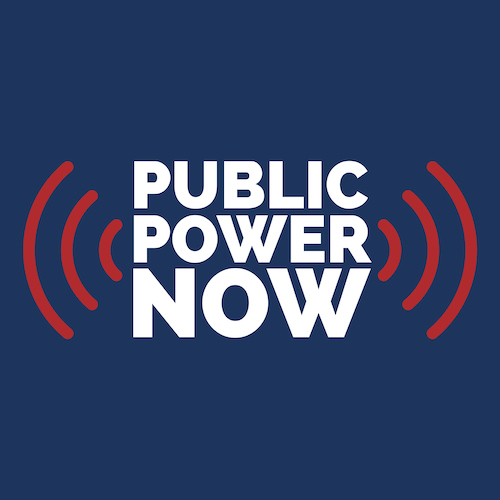Mandip Samra, CEO and General Manager of California public power utility Burbank Water and Power, and David Koster, General Manager of Michigan public power utility Holland Board of Public Works, on June 9 discussed strategies for public power utilities can utilize to effectively engage with their communities.
They made their remarks at a session at the American Public Power Association’s National Conference in New Orleans, La.
In his presentation, Koster offered a series of case studies related to Holland Board of Public Works.
One of those case studies involved a power supply planning process for the city “dating back to about the 2008, 2009 timeframe. We had an aging coal plant. We had growth going on. We had to figure out what we were doing next for power supply in our community.”
The utility proceeded with developing an integrated resource plan. “We were starting down the road of looking at expanding onto our existing coal plant with a circulating fluidized bed option for that plant – it was just one option of many,” he said.
“What happened was we got a fairly large opposition coming into that process – and it was both from local in terms of looking at the long term waterfront utilization where our coal plant was currently, but also from an environmental standpoint,” referring to responses from outside of Holland.
The utility stepped back and “we said let’s do a fairly significant public engagement process here to bring the community into this decision, rather than just as a utility believing that we had the best idea and we can move forward on that.”
So the utility started a process called Power for the 21st Century or P21, “which was a communication process first” that ultimately culminated in what’s called a sustainable return on investment analysis. Such an analysis helps a community “look at an infrastructure project with a holistic look at it – not just the financial impacts, but what are the societal impacts – environmental, social, economic impacts to that decision that will be on the utility?”
“What we found is that when we” bring stakeholders together “there are a lot of different perspectives that came into this problem solving process that really helped shape the decision for us more holistically.”
At the same time, “We didn’t say we’re giving up the decisionmaking process to all of you. We set the parameters correctly and I think we set the expectations correctly that this was to help inform a decision, but ultimately our decision still rested with our board and our city council.”
What this process resulted in is a “very good outcome in terms of the community knowing that they had a voice in it, that the process was transparent, comprehensive and inclusive at the end of the day.”
Ultimately, the decision was made to not pursue the circulating fluidized bed unit and “we’re actually going to let the existing coal plant retire and shutdown. We’re going to invest in a new technology – efficient natural gas combined cycle technology and also to put renewables with that.”
Once that happened, “I think it help kind of gel the community together on this decision. They knew they were part of it. They knew the process was open and transparent and from a utility perspective, we said this is pretty refreshing to actually have gone through this process, have it work knowing that you didn’t really give up control but you still allowed the community into this process and so we said, once that was done let’s continue with this whole stakeholder process work.”
Koster also provided community engagement case studies tied to Holland CityFiber and a waterfront project.
Koster wrapped up his remarks by providing five key takeaways:
• Engage early
• Identify key influential voices
• Set expectations clearly
• Align on a good process
• Focus on intentions; be open to adjustments in details
Samra discussed, among other things, these topics during her presentation:
• Transparency in governance
• Communicating Effectively and Clearly
• Bringing humanity to the role of general manager
• Innovation and partnerships
One of the things she provided additional details on is the ongoing efforts by her and the utility to meet with members of the Burbank community often.
In a Q&A with Public Power Current in late 2024, Samra detailed how she is connecting with the utility’s customers through a series of conversations over coffee.
In her remarks at the APPA National conference, Samra underscored the importance to her of meeting with the community in order to build community trust.
On the topic of communicating effectively, Samra noted that the utility regularly produces Op-Ed articles on topics such as:
• The utility’s response to windstorms
• Power Resources 101
• The utility’s Magnolia Power Project
• Rate adjustments
“These are all one pagers” with visuals, Samra said, noting that she shares the Op-Ed articles through her LinkedIn page.

